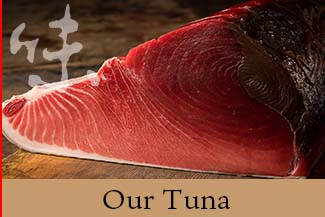NEWSお知らせ
Pursue TUNA Without Compromise.大善のこだわり
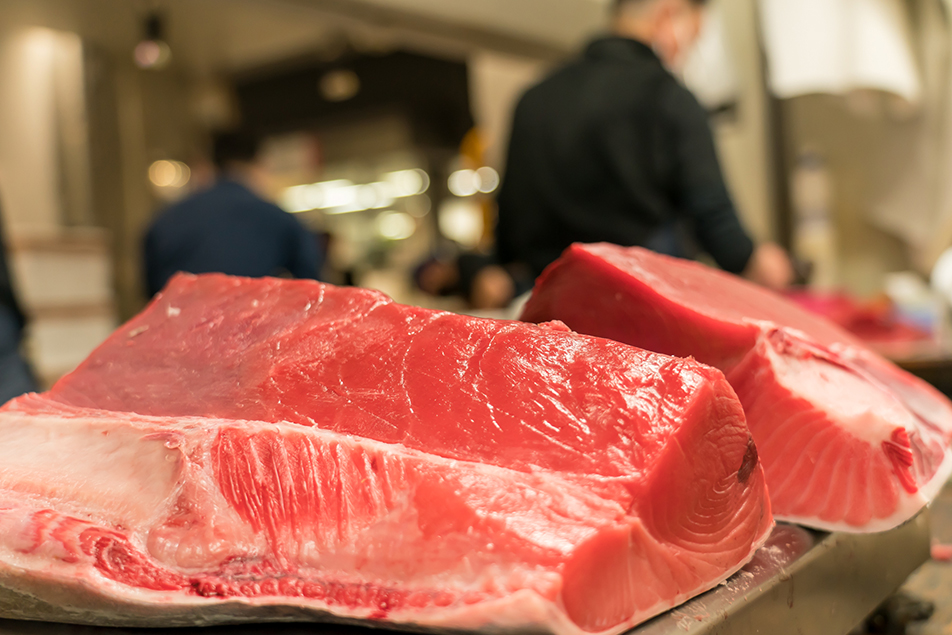
1, Tuna is “Classic”
Daizen purchases Tuna which are mainly caught using the longline fishing method. Tuna longline features brilliantly colored red meat with translucent gloss , and beautiful pink fatty toro with hardly any streaks. The meat is tight and firm. Those qualities are “Classic” Tuna of Daizen’s selection. We are proud of that selects high quality Tuna in terms of our long historical experience and knowledges.
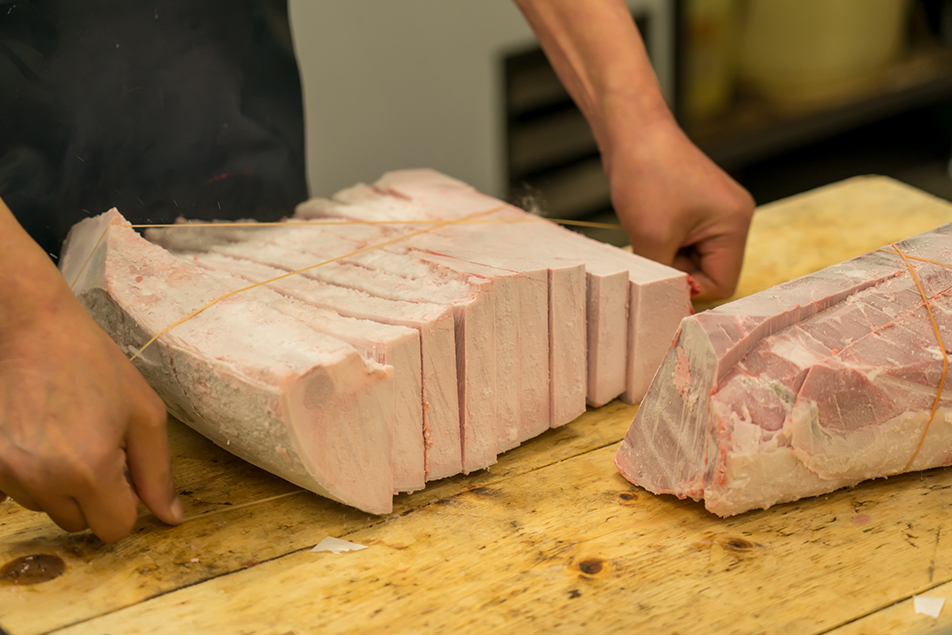
2, Great selection, frozen to fresh
Daizen has a wide selection of Tuna to offer to variety of customers such as restaurants including sushi restaurants and the retailers like grocery stores. We can provide raw or frozen, and from whole fish to specific parts, as requested.
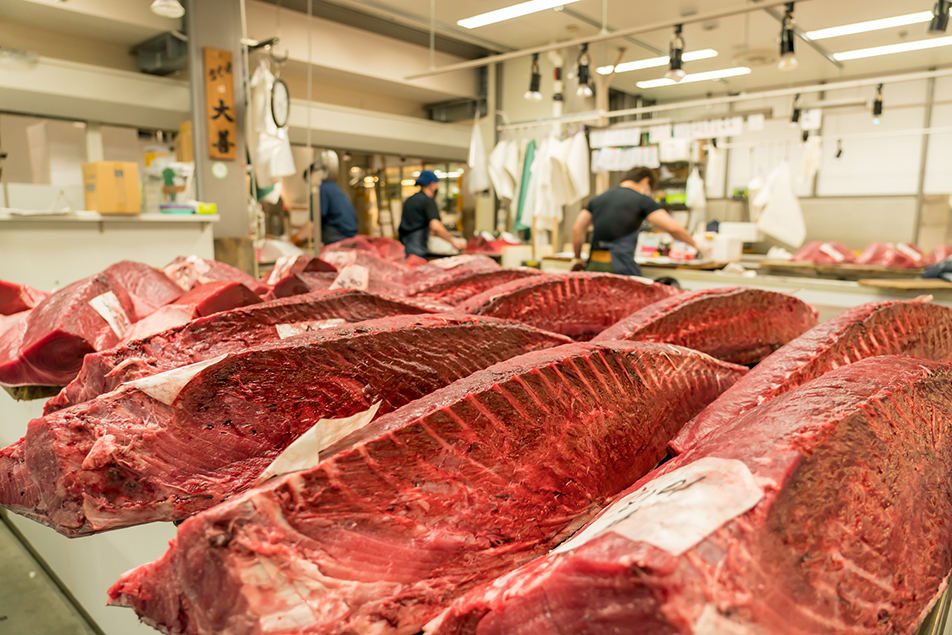
3, Offering exceptional Tuna through the year
Seasonal Tuna is in a different area depends on the season. In addition, Tuna quality is different depends on water temperature and fishing methods. Daizen ensures high quality Tuna constantly through the year by storing Tuna frozen after they are caught with “ great timing”.
TUNA of Daizen.大善のまぐろ
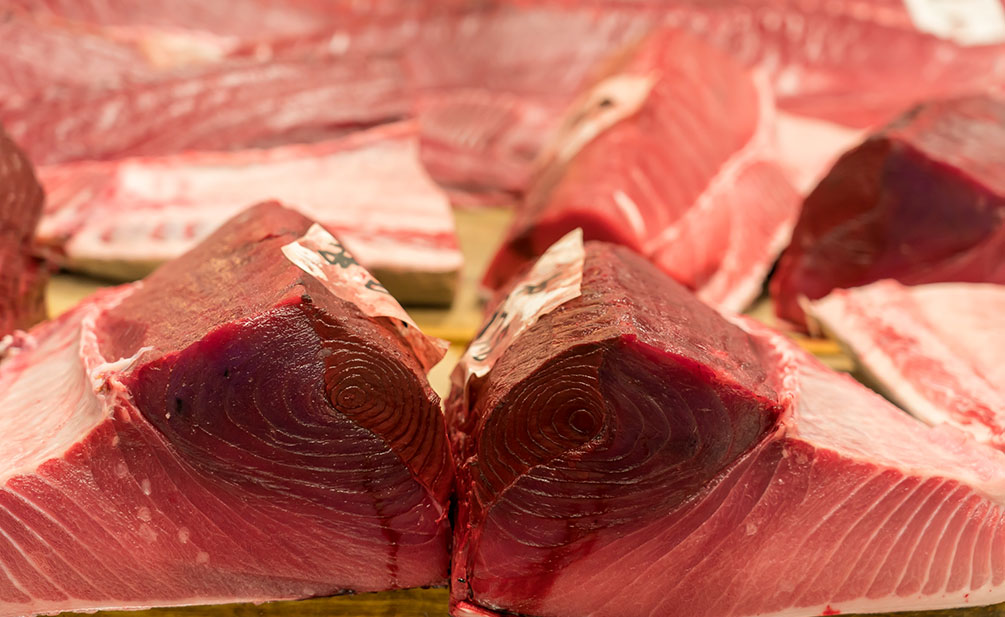
Bluefin tuna 本まぐろ
Bluefin is the largest tuna (about 2.7m length) and the most expensive and the most popular tuna . 90% of Daizen’s Tuna is this bluefin tuna. We bid for the best tuna in terms of taste and attiness. We look for the best Tuna depending on the season. For example, we look for Tuna caught in Oma (Aomori prefecture) and Toi (Hokkaido) from September to October, and in Shiogama (Miyagi prefecture), Nachikatsuura (Wakayama prefecture), and Sakai Minato (Tottori prefecture) in Spring
Southern bluefin tuna みなみまぐろ
The only known breeding area is in the Southern Hemisphere. Length of body is about 2.3m and a little bit smaller than bluefin tuna but fish meat is as same as bluefin.
Bigeye tuna めばち
The bigeye tuna have a large eyes on each side and football-shaped. Body length is around 2m. Most of their body has a red meat but there is medium fatty tuna too. The best season for raw bigeye tuna is in the late autumn to winter.
Yellowfin Tuna きはだ
Yellowfin tuna get their name from the bright yellow color of their dorsal, anal, and tail fins. Reaching lengths of nearly 1.5m. Fish meat has less fat and pink color, with light taste.
Albacore Tuna びんなが
Albacore tuna get their name from their long chest fin. The body length is about 1m. They have fatty meat and taste sweet. They are often called “Bintro” which means mixing up Albacore and fatty toro. They are very popular for Sashimi and Sushi.
Kajiki-Maguro (Marlin) かじきまぐろ
arlin is fish from the family Istiophoridae but appearance and meat quality are similar to tuna so they are called “Tuna”. The best season is from January and February. It tastes light and has low calories. Great quality Marlin can be eaten raw as Sashimi.
History of Daizen.大善の歴史
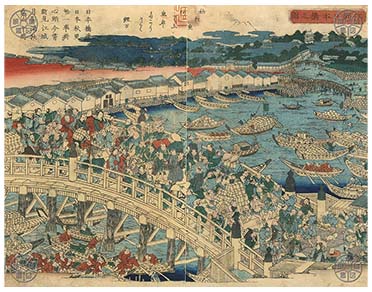
Edo 江戸
The latest Uogashi (fish market) in Toysu started from early Edo era. The fishermen of Tsukuda village in Settsu moved to Edo to supply fishes for the shogun when Ieyasu Tokugawa entered Edo. The fishermen asked the Shogun to sell the remaining fishes to the people, which started Uogashi(fish market). Three fishermen who asked for permission from the Shogun were Hirayoshi Oguroya , Sonroku in Tsukuda and the founder of Daizen. The history of Daizen begun with the establishment of Uogashi.
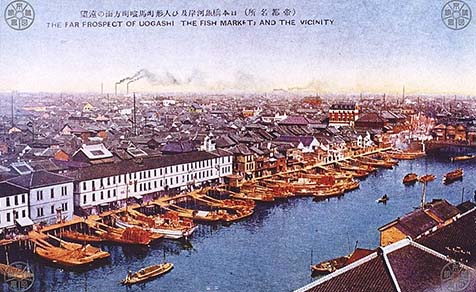
Nihonbashi 日本橋
Uogashi in Nihonbashi was located in current Nihonbashi Honcho 1 chome. In these days, wholesalers, brokerages and retailers were trading fishes from Boushu(Chiba), Soushu(Kanagawa), Enshu (Shizuoka) and so forth. At that time, white fish such as red snapper were considered high quality while red fish were less preferred, due to storage technology. In the late 1800s, the 16th head of Daizen, Zenjiro Takarai, started to specialize in Tuna.
At that time, Tokyoite preferred light tasting red meat and were not interested in fatty tuna. In Taisho era (1912-1926), young people working at Uogashi(fish market) realized how delicious fatty tuna was. In 1922, Daizen, with a mission to promote fatty tuna, opened a tuna restaurant “Daizen Maguro(Tuna) Sushi” in Asakusa that gained in popularity.

Tsukiji 築地
Uogashi(fish market) in Nihonbashi, which continued for over 300 years, was decided to move to Tsukiji after the great Kanto earthquake in 1923. As Tsukiiji opened in 1935 to start its new chapter, Daizen also commanded popularity as a traditional Tuna merchant.
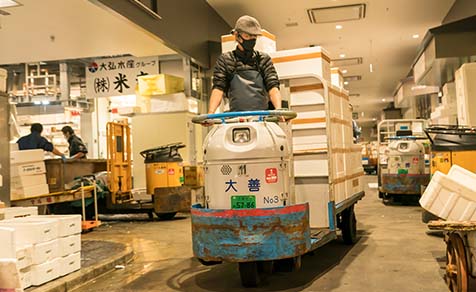
Toyosu 豊洲
Tsukiji fish market has relocated to Toyosu and so has Daizen. Daizen secures approximately 30 Tuna every day. There are 50t Tuna in its freezer at all time to respond to customers’ request anytime. Our clients are Sushi restaurants/ Japanese restaurants and luxury grocery stores nationwide. We have been shipping to China and Hong Kong since 2007.




